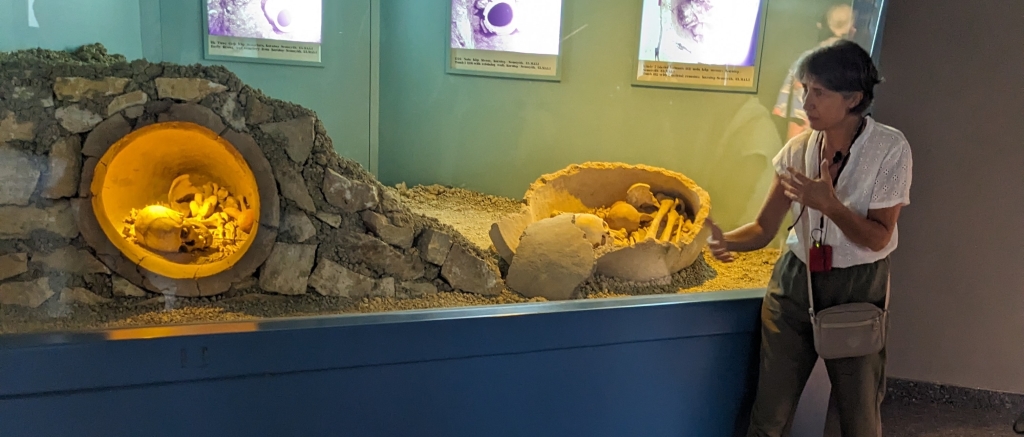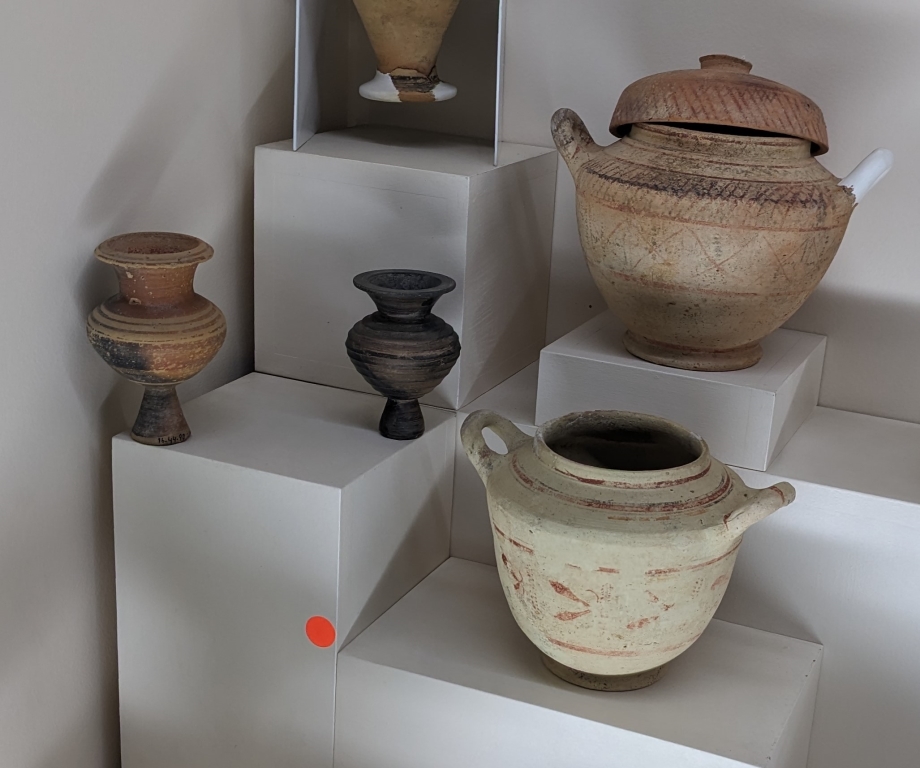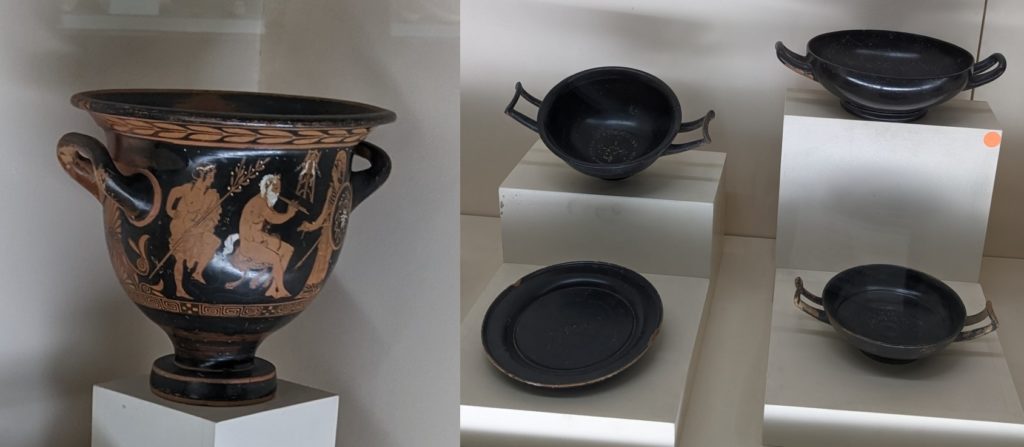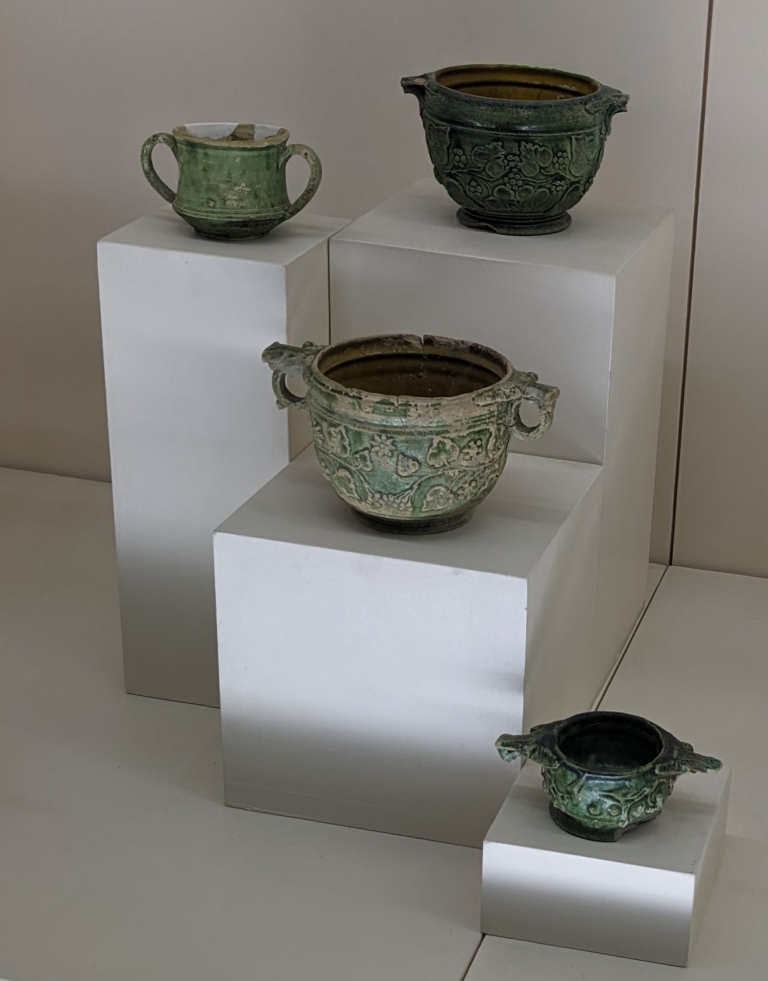There’s a big advantage to viewing a museum of ancient history with an archeologist guide. The placards, books, and other museum literature will show you pictures, dates, and physical characteristics of the objects on display. An archeologist will explain how this applies to the residents — how they lived, where they lived, what they believed, etc. — plus how and why these things changed over time. The latter is more interesting, but takes some time to discuss. Here are a few interesting quick takes.
Shortly after pottery was invented, people of the area started placing their dead in large pots and burying the pots underground. The buried only the bones. When additional family members died, they opened the pots and added the newly departed. It wasn’t uncommon for a pot to hold the remains of seven people.

The two small bottles hold perfume. The fancy decoration of the pots acted as a trademark. It made the perfume popular throughout the larger area of the time, all the way to Egypt and beyoned.

The most artistic pots slowly shifted from Antalya to Greece. Greece made the fabulous pot on the left. Then suddenly, they lost the ability to make those pots. They switched to the black puts on the right. Nobody knows why.

The green color in these pots comes from lead. They knew that lead was poisonous, but they warmed their wine in these poisonous pots anyway. Apparently, they liked the color.

We have the afternoon off today. We resume our ride in the morning. I hope this finds everybody doing well.
